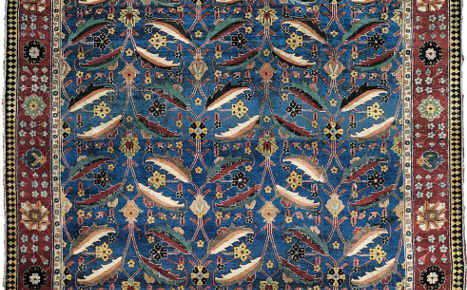The woman received €19,700 for the 17th century Persian carpet when it was auctioned by the Augsburg house.
She told the court that if he had spent more than “a few seconds” examining it and had done some background research, he would have identified the carpet as an exceptional piece of art.
But the auction house was let off from compensating the woman, as the court ruled that the antiques dealer neither intentionally violated his professional duty nor had he been negligent while inspecting the piece.
The auctioneer claimed as a general dealer he was no expert in carpets and put it in his catalogue without a picture, with an estimate price of €900.
“Had I known what it was, I would have rejected it,” he told the court. His lawyer said he generally dealt with house-hold items and had never heard of the “Survey of Persian Art” by Arthur Upham Pope, a standard reference book for collectors in which the carpet was pictured.
Shortly after the verdict, the woman’s lawyer Hannes Hartung said she is likely to appeal to the Bavarian state court in Munich. “We will carefully analyze the written verdict and very probably appeal,” he told reporters.
Hartung said that the court had missed a vital point in its verbal ruling. “The auctioneer should have informed his client that he didn’t know anything about this carpet,” he said. He said if the written verdict did not address this point, an appeal would be inevitable.
Dating from the 17th century, the rug may look unremarkable to an untrained eye. It measures 3.39 by 1.53 metres and is adorned with a motif of leaves and flowers.
Made by weavers in the Kirman region of Persia, the carpet once belonged to 19th century society host the Countess Martine Marie-Pol of Béhague, who boasted a large collection of Iranian art.
The countess left the rug to her nephew the Marquis of Garney, and it stayed in the family until 1987 when a German dealer bought it in an auction. Like the Augsburg dealer, he did not realize the piece’s true value and gave it to his housekeeper as a gift.
As a friend of the housekeeper, the plaintiff inherited the rug in his will. “It was so big, so long, it didn’t fit into my flat,” she said of the carpet.
The woman requested damage payments of €100,000, which the dealer claimed would have left him bankrupt.
The plaintiff had initially asked for €350,000, the price experts at the British auction house Christie’s had given the carpet. It was brought down during negotiations before the hearing.
The carpet went on to become the most expensive carpet ever sold, and now belongs to an anonymous bidder who paid millions of euros over Christie’s estimate.
The Local/DPA/DAPD/jcw



 Please whitelist us to continue reading.
Please whitelist us to continue reading.
Member comments